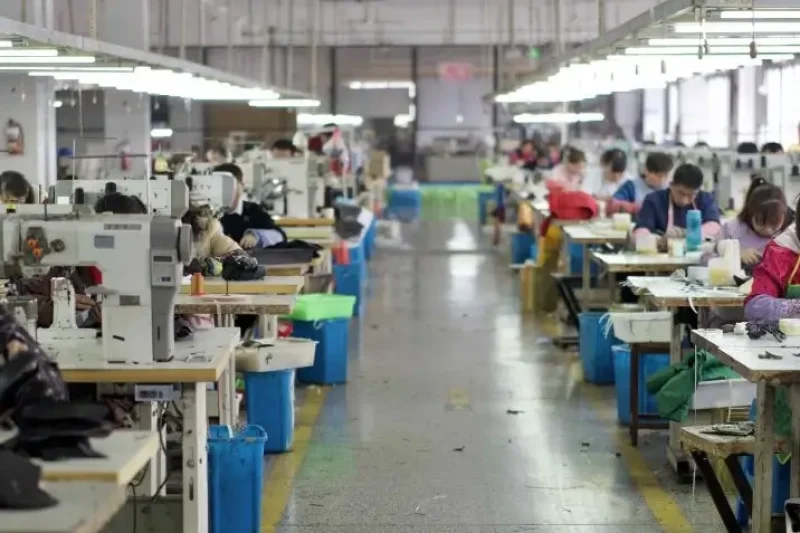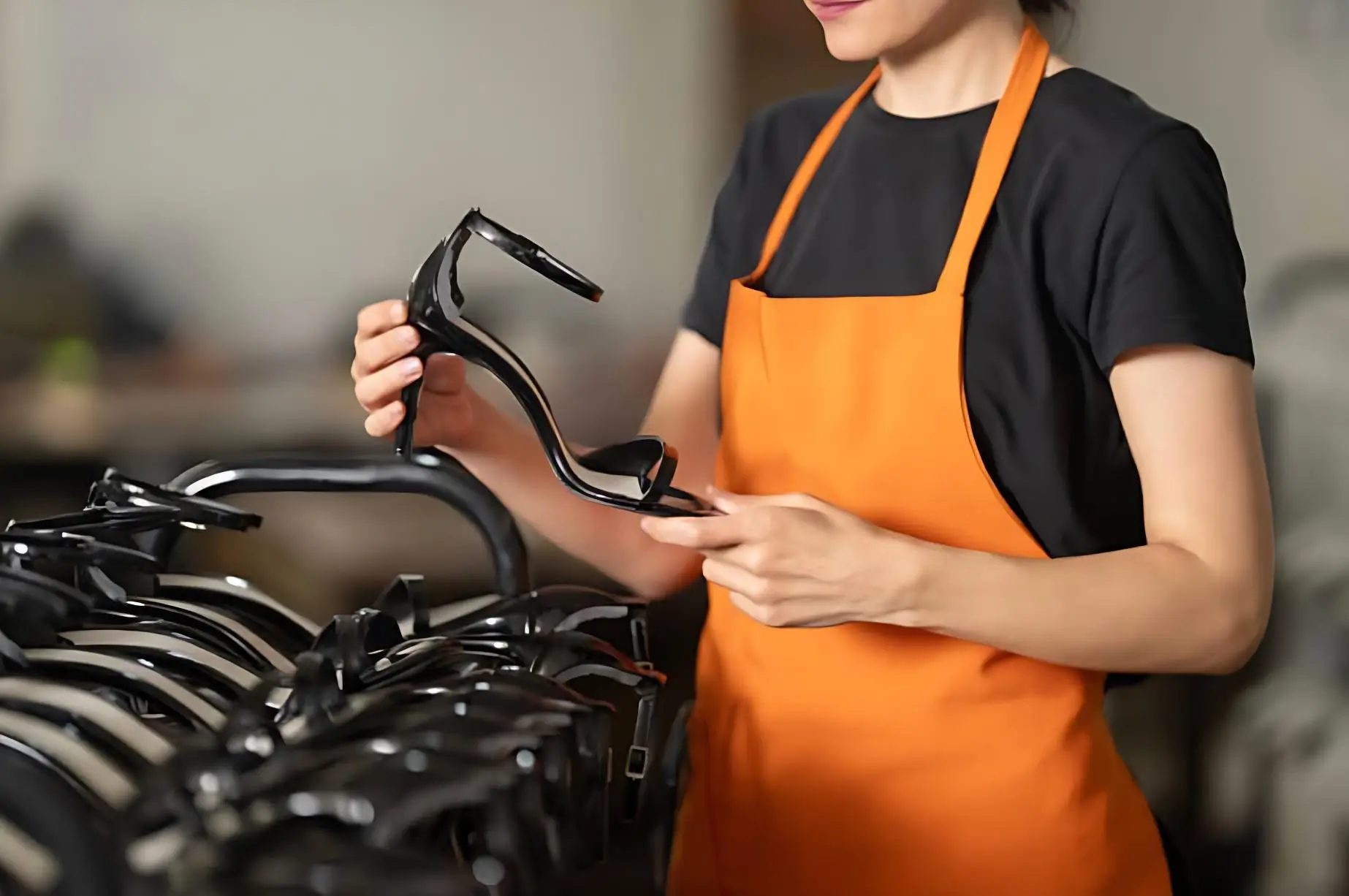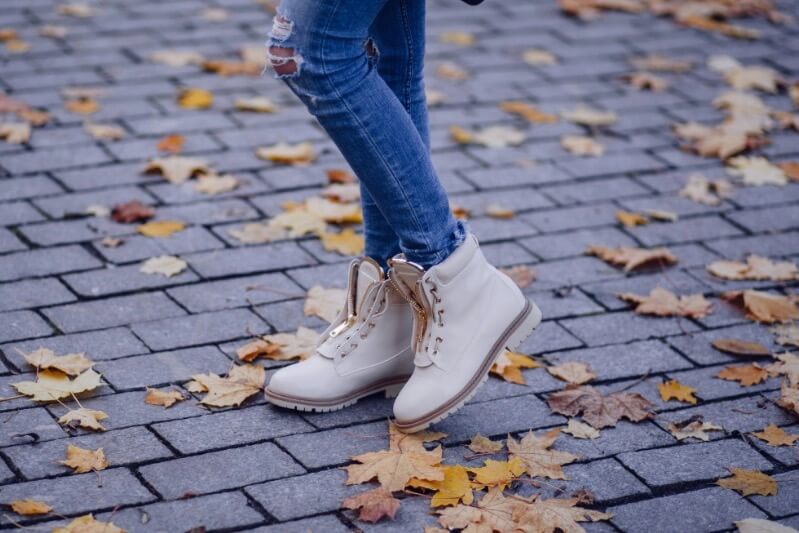As a brand owner or a footwear buyer, understanding how shoes are made is your secret weapon. It’s the knowledge that separates the amateurs from the professionals. It allows you to have more intelligent conversations with your factory, to truly control your quality, and to make smarter decisions that have a direct impact on your bottom line.
I’ve spent over 15 years on the factory floor of our Wenzhou shoe factory, working with everyone from ambitious startups to major global brands. In this guide, I’m going to take you on a step-by-step tour of the modern footwear manufacturing process. We’ll go beyond the surface-level explanations. We’ll dive into the critical details of each stage, from the initial custom shoe design to the final product. This is your insider’s look into what it takes to create truly high quality shoes.
The Blueprint: From a Designer’s Vision to a Technical Plan
Before a single piece of leather is cut or a single machine is turned on, every shoe begins its life as an idea. This initial phase is the foundation for everything that comes next. A great Chinese manufacturer doesn’t just receive your order; they should be able to help you refine this blueprint to make sure your shoe is not only beautiful, but also manufacturable.
The Initial Design: The Soul of the Shoe
It all starts with a creative vision. A designer might sketch a new silhouette, be inspired by a new material, or see a gap in the market for a new type of fashionable footwear. This is the “soul” of the shoe. It’s where the journey of creating personalized shoes begins.
The Tech Pack: The Language of the Factory
But to turn that creative vision into a real, manufacturable product, it needs to be translated into a technical blueprint. This is where a tech pack comes in. A professional tech pack is the universal language of the shoe factory. It is a detailed document that leaves no room for error. A great tech pack is the first step towards building a successful relationship with footwear suppliers.
What’s in a Tech Pack? A great tech pack includes 2D technical drawings, a complete list of all materials (a Bill of Materials, or BOM), detailed construction notes, and precise Pantone color codes for every component.
Why it’s a Non-Negotiable: A well-prepared tech pack shows a factory that you are a serious, professional partner. From my experience, it is the single most important document for getting an accurate price quote and for ensuring that the sample you receive matches your vision.
How JINHUA Can Help: We know that creating a detailed tech pack can be a daunting task, especially for new brands. Our experienced team can work with you to create a professional, production-ready tech pack from your initial sketches and ideas. This is a core part of our OEM footwear solutions.
The Foundation: Materials, Lasts, and Preparation
With the blueprint finalized, the next stage is to lay the physical foundation for the shoe. This involves sourcing the right materials, creating the “last,” and the critical cutting process.
Step 1: Sourcing the Right Materials (Leather, Canvas, and Beyond)
The quality of your raw materials will have a huge impact on the final quality and perceived value of your shoe.
The Importance of Sourcing: A great manufacturer will have a dedicated sourcing team with a deep network of trusted material suppliers. This is critical for sourcing high-quality materials at a competitive price. We work with suppliers who share our commitment to producing shoes and boots built to last for years.
A World of Options: The material options are almost endless. This includes everything from classic, LWG-certified leathers to a huge range of synthetic materials and textiles. The choice of material is key, whether you are creating classic boots for men or trendy women’s casual shoes.
Sustainable Footwear: In recent years, the demand for sustainable footwear has exploded. This is a huge area of opportunity for brands. A good shoe factory in China should be able to source a wide range of eco-friendly materials, from recycled PET to innovative plant-based leathers.
Step 2: Creating the Last (The Heart of the Fit)
This is one of the most important, and most often overlooked, steps in the shoe making process.
What is a Last? The “last” is the solid, foot-shaped form that the shoe is built around. It is arguably the most important tool in shoemaking, as it determines the final shape, fit, comfort, and style of the shoe.
Why it’s a Key Differentiator: As a brand, investing in your own set of custom lasts is a powerful way to create a signature, comfortable, and consistent fit that your customers will love. It’s what separates a generic shoe from a product that feels like it was made just for your customer. It’s how you get shoes and boots crafted for comfort and style.
Step 3: The Precision Cut (The First QC Checkpoint)
The cutting room is the first critical quality control checkpoint on the factory floor.
The Process: Here, large rolls of fabric and hides of leather are laid out and cut into the individual pieces that will form the shoe’s upper.
Technology and Skill: In a modern shoe factory, this is done with a combination of high-tech and traditional methods. For large orders, powerful, computer-controlled cutting machines are used for incredible precision and efficiency. For more delicate materials or complex shapes, the skill of an experienced artisan is still required. These are shoes and boots made by skilled hands.
The Art of Assembly: A Deep Dive into Stitching and Welting
Once all the pieces are cut, they move to the assembly line, where the shoe begins to take its three-dimensional form.
The Stitching Line: Where the Upper Comes to Life
This is often the most labor-intensive part of the factory. A team of skilled workers, each specializing in a different task, will expertly stitch the flat, cut pieces together to create the upper of the shoe. A simple sneaker might have 20-30 separate pieces that need to be stitched together. A complex hiking boot could have over 50. The quality of the stitching—its density, its tension, and its accuracy—is a clear indicator of a well-made shoe.
Welting Explained: Goodyear vs. Blake vs. Cemented
The “welting” is the method used to attach the sole to the upper. The construction method you choose will have a huge impact on your shoe’s durability, flexibility, and final price point.
Goodyear Welt: This is the gold standard for high-end, durable, and repairable boots and dress shoes.
Blake Stitch: This method is often used for sleek, elegant dress shoes.
Cemented Construction: This is the most common method for sneakers and casual shoes. The key to a good cemented shoe is the quality of the adhesive and the rigor of the bonding process. This is a core part of modern sneaker manufacturing.
How JINHUA Can Help: We are experts in a wide range of construction methods. We can work with you as a consultant to help you choose the right method to match your brand’s aesthetic, your quality standards, and your target price point.
The Final Touches: Finishing, Quality Control, and Packaging
The shoe is now fully assembled, but it’s not finished yet. The final stages are where a product becomes a premium product.
The Finishing Department: Where a Product Becomes Premium
The finishing department is where all the small, but critical, details are added. For leather shoes, this is where they are polished and conditioned. For all shoes, this is where the insole is inserted and the laces are threaded. The small details here are what a customer notices, and what justifies a higher price point.
The Final Inspection: Our Commitment to Perfection
Every single pair of shoes that we make goes through a thorough final inspection. Our trained QC inspectors check for any cosmetic defects, structural problems, or inconsistencies. They compare the finished shoe to the approved “golden sample” to make sure it matches perfectly. This is the core of our quality assurance program.
The Unboxing Experience: Custom Packaging
The final step is the packaging. A great shoebox is more than just a container; it’s the final, and most memorable, part of the customer experience. A great manufacturer will be able to help you design and produce a full custom packaging solution.
JINHUA in Action: Your Partner in the Manufacturing Process
At JINHUA, we are more than just a factory; we are a strategic partner for quality footwear brands.
Our Expertise, Your Advantage
We have been mastering the footwear production process for over 20 years. We have the experience, the equipment, and the skilled team to bring your vision to life with quality and precision. We are a wholesaler and retailer partner you can trust.
A Transparent and Collaborative Process
We believe in total transparency. We will work with you as a consultant and a partner throughout the entire process, from the initial design to the final delivery. We offer flexible order quantities to support brands of all sizes.
From Your Idea to Your Warehouse
We are a full-service, end-to-end partner. We can handle everything from design development and material sourcing to production, quality control, and logistics. We offer a wide range of canvas shoes styles and fashionable boots.
Frequently Asked Questions
1. What is a “shoe last” and why is it so important?
A shoe last is the solid, foot-shaped form that a shoe is built around. It is arguably the most important tool in shoemaking, as it determines the final shape, fit, comfort, and style of the shoe.
2. What is the difference between a Goodyear welt and a cemented shoe?
A Goodyear welted shoe uses a traditional stitch to attach the sole, which makes it very durable and easy to repair. A cemented shoe uses a strong adhesive, which makes it more lightweight and flexible, but generally less durable.
3. How long does the entire shoe manufacturing process take, from design to delivery?
For a brand-new design, you should plan for a total of 90-120 days. This includes about 30-45 days for mold making and sampling, and another 45-60 days for mass production.
4. How can I ensure the quality of my shoes during the manufacturing process?
The best way is to work with a manufacturer who has a rigorous, multi-stage quality control process. You should also always approve a final “golden sample” before mass production begins, and you should consider hiring your own independent, third-party inspection company to conduct a final inspection of your goods. This is a key part of quality assurance in footwear manufacturing.
5. Do you offer free shoe samples?
We do provide samples as a critical part of the development process. For our serious partners, the cost of the samples is often credited back on the bulk production order, which is a core part of our commitment to building long-term relationships.
Final Takeaways: Mastering the Manufacturing Process
As we’ve explored, understanding how shoes are made is a powerful tool for any brand owner or buyer. Success comes from a deep appreciation for the process and finding a partner who is as committed to the details as you are.
The Tech Pack is Your Foundation: A detailed tech pack is the key to a smooth production run.
The Last is the Soul of the Fit: A custom last is a powerful way to create a unique and comfortable shoe.
Quality is a Process, Not a Final Check: Great quality is built in at every stage.
At Jinhua Shoes, we don’t just have a factory; we have a passion for the process. It’s a journey we live and breathe every single day. We believe that what separates a good shoe from a great one is a relentless obsession with the details.
If you’re ready to partner with a shoe manufacturer in China that can help you create a truly great shoe, my team and I at JINHUA are here to help.
Got a project in mind? Let’s turn it into reality. Send your project details to our expert team by email to start the conversation.
📧 Email: sales@jinhuashoes.com
(You’ll get personalized expert feedback within 12 hours.)



